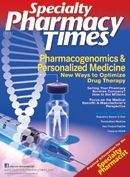Publication
Article
Specialty Pharmacy Times
Bone Health Watch
US Task Force Upgrades Osteoporosis Screening Guidelines
The US Preventive Services Task Force (USPSTF) released new osteoporosis screening guidelines in January 2011 to include all women 65 years and older as well as any postmenopausal women who are at increased risk of bone fractures, such as those weighing less than 125 lb, those who smoke cigarettes or drink alcohol, and those with a history of bone fractures.
The last time these guidelines were updated was in 2002, when insufficient evidence was thought to exist to suggest that any woman younger than 60 years should be screened for osteoporosis. Recent research, however, suggests that women who are screened and then treated early for osteoporosis have better outcomes and fewer fractures. Treatment options include increased calcium and vitamin D intake as well as weight-bearing exercise and prescription- only bisphosphonates.
Although the USPSTF’s recommendations extend osteoporosis screening to more women, it still does not recommend screening of men. The National Osteoporosis Foundation, however, recommends testing men 70 years and older and men aged 50 to 69 years with risk factors. Less evidence of any benefit led the USPSTF not to recommend screening for men.
The USPSTF report states that osteoporosis will affect 12 million Americans older than 50 years by 2012, and over half of all postmenopausal women will develop a fracture related to osteoporosis in their lifetime, 15% of which will be hip fractures.
IOM Joins the Calcium and Vitamin D Debate
Is there an upper limit for how much calcium and vitamin D should be recommended in older patients? As calcium and vitamin D supplementation continues to be an area of interest, many organizations and institutions are updating their recommendations to reflect findings in recent studies.
The Institute of Medicine (IOM), a nonprofit, nongovernmental organization, has updated its recommended dietary allowances (RDAs) of calcium and vitamin D from 1997, increasing the RDA of elemental calcium to 1000 mg daily in men and 1200 mg daily in women between the ages of 51 and 70. IOM also increased its vitamin D RDA to 600 IU daily in everyone aged 1 to 70 years.
The maximum allowable RDA for elemental calcium is 2000 mg daily for all adults older than 50 years, and for vitamin D it is 4000 IU daily for all ages. IOM also recommends a target serum 25-hydroxyvitamin D (25-OH-D) level of above 20 nmol/L, much lower than 75 to 80 nmol/L, which is typically suggested by other organizations. Although these supplements, particularly vitamin D, are more frequently being used for purposes other than bone health, it is important to recognize maximum RDAs in order to prevent toxicity. “Higher levels have not been shown to confer greater benefits,” the report says, “and in fact, they have been linked to other health problems, challenging the concept that ‘more is better.’”
Children With IBD Are at High Risk for Vitamin D Deficiency
I has long been thought that patients with more severe inflammatory bowel disease (IBD) experience vitamin D deficiency due to severe malabsorption. New research published in January’s issue of Digestive Disease Science, however, shows that rather than depending on severity of disease, vitamin D deficiency may depend on the treatment.
Researchers from Sydney, Australia, conducted a retrospective analysis of medical charts of children with IBD attending the Sydney Children’s Hospital IBD clinic who had serum 25-OH-D levels checked at least once in a year period. Moderate and severe 25-OH-D deficiency was defined as <51 and <30 nmol/L, respectively, while insufficiency was defined as a level between 51 and 75 nmol/L.
The scientists found that of the 104 measurements of 25-OH-D levels, 25 (24%) showed a deficiency. The deficient group had significantly greater corticosteroid exposure than the sufficient group, and children treated with supplemental vitamin D had a higher mean 25-OH-D than children initially treated with corticosteroids. Serum levels were not associated with disease location, disease severity, or use of other immunosuppressive drugs. SPT
Fast Fact: Estrogen deficiency in women and testosterone deficiency in men are the leading causes of osteoporosis in later life.







